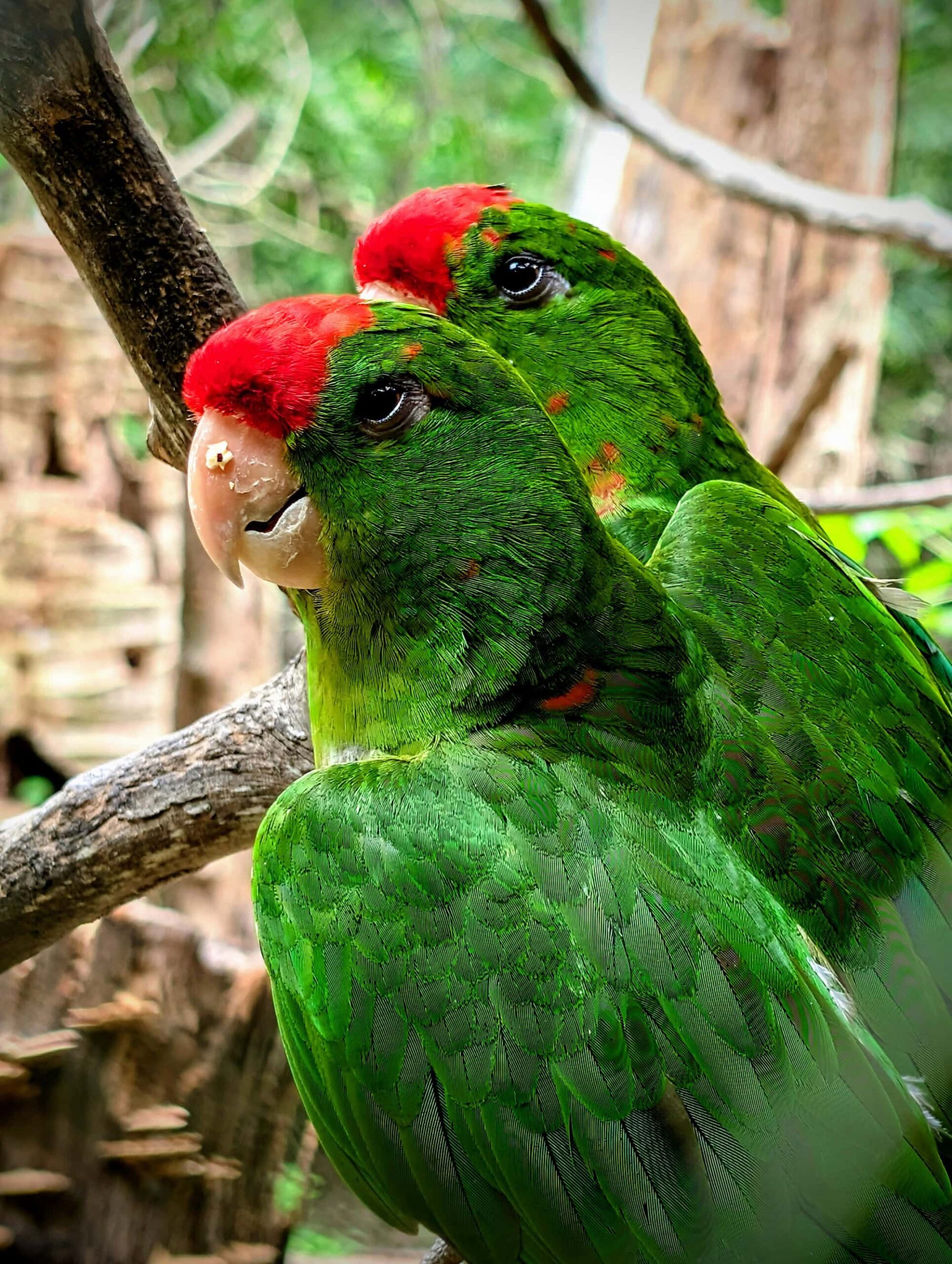Introduction
The Scarlet-fronted Parakeet (Psittacara wagleri), also known as the scarlet-fronted conure, red-fronted conure, or Wagler’s conure, is a striking species of parrot native to South America. Renowned for its vibrant colors and sociable nature, this bird occupies a range of habitats in the Andes and surrounding regions.
Description
- Size: Medium-sized, measuring 34–40cm (13–16in) in length, and weighing between 162–217g (5.7–7.7oz).
- Plumage: Predominantly green with a distinctive bright red forehead and front part of the crown. Red may also spread around the eyes, throat, or thighs, with underparts tinged more yellowish.
- Tail: Long and tapered.
- Other Features: Strong, hooked beak, white eye-rings, and pinkish or brown legs and feet.
- Sexes: Both sexes look alike. Juveniles display less red on the head than adults.
Distribution and Habitat
- Geographic Range: Found in Colombia, Venezuela, Ecuador, and Peru.
- Habitats:
- Subtropical/tropical dry forests
- Moist lowland and montane forests
- High-altitude shrublands and forests
- Edge habitats, agricultural fields, orchards, and even urban parks
- Elevation: From 350m to 2,500m (1,100 to 8,200ft) above sea level.
Behavior
- Social Structure: Highly social, typically seen in noisy flocks that may range from small groups to large congregations, especially outside the breeding season.
- Diet: Feeds on fruits, seeds, nuts, and berries. Known to forage in trees and sometimes visit crop fields, occasionally causing minor conflicts with farmers.
- Vocalization: Known for their loud, harsh calls used for intra-flock communication.
Breeding
- Nesting: Prefers nesting in tree cavities, holes in cliffs, or even man-made structures if natural sites are scarce.
- Clutch Size: Lays 3–4 eggs.
- Parental Care: Incubation lasts about 23–26 days, mainly by the female. Both parents feed and care for the chicks post-hatching.
- Breeding Season: Usually aligns with the region’s rainy season.
Conservation Status
- The Scarlet-fronted Parakeet is listed as Near Threatened according to some sources, though other databases may still list it as Least Concern due to its wide but fragmented distribution. The species faces pressures from habitat loss and capture for the pet trade but still maintains sizable populations in several regions.
Taxonomy Notes
- Formerly classified in the genus Aratinga; now placed in Psittacara.
- Taxonomy varies among organizations, with some splitting or lumping related subspecies, including the Cordilleran Parakeet (P. frontatus).
The Scarlet-fronted Parakeet’s vivid appearance and lively behavior make it a notable member of the Andean avifauna, but its continued survival depends on effective habitat conservation and thoughtful wildlife management.

Leave a Reply